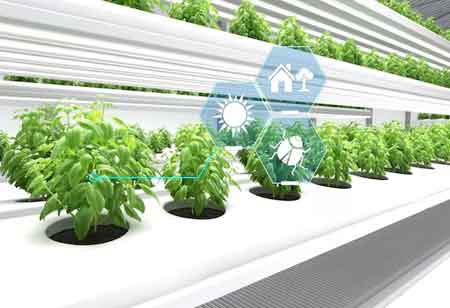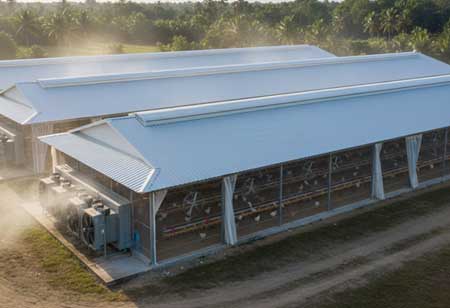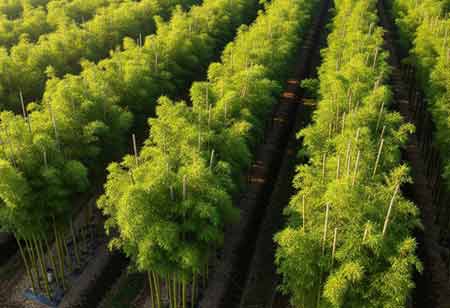Thank you for Subscribing to Agri Business Review Weekly Brief
The Soil Intelligence Era: A Strategic Shift in Agribusiness Thinking
Modern agriculture is evolving from input-intensive practices to soil-intelligent systems that leverage data and biological insights for sustainable, efficient crop production.

By
Agri Business Review | Wednesday, August 20, 2025
Stay ahead of the industry with exclusive feature stories on the top companies, expert insights and the latest news delivered straight to your inbox. Subscribe today.
Modern agriculture's narrative is one of remarkable achievement, a testament to human ingenuity in sustaining a burgeoning global population. For much of the past century, the dominant philosophy was one of intensification. The farm was conceptualized as a factory floor, and the soil as its foundation—an essentially inert medium to be supplied with all crop requirements. This input-intensive model, characterized by the extensive application of synthetic fertilizers, pesticides, and irrigation, successfully amplified nature's productivity on an unprecedented scale. It represented a strategy of command and control, a powerful chapter in our agricultural history. Today, however, we stand at the precipice of a new era, one that signifies not merely an incremental improvement but a fundamental paradigm shift.
The essence of this transformation lies in a thorough reevaluation of the soil itself. The traditional paradigm regarded soil as a mere receptacle for plant roots, a physical anchor whose chemical and biological deficiencies could be rectified through external interventions. The contemporary understanding recognizes soil for what it truly is: a complex, living ecosystem. It functions as a metropolis teeming with billions of microorganisms—comprising bacteria, fungi, protozoa, and nematodes—all engaged in an intricate web of interdependencies. This subterranean realm is responsible for critical functions, including nutrient cycling, water retention, and disease suppression.
Soil intelligence, therefore, constitutes the practice of comprehending, monitoring, and collaborating with this intricate ecosystem. The objective is no longer to overcome natural limitations through sheer chemical force, but rather to empower the soil's intrinsic biological machinery. This represents a fundamental shift from chemically driven agriculture to a biologically informed, data-driven approach. The emphasis transitions from directly nourishing the plant to cultivating a robust, flourishing soil environment, which in turn fosters a resilient and productive crop. This approach regards the soil not as an impediment to be resolved, but as a collaborative partner whose inherent potential can be actualized.
The Digital Nervous System
This transition is facilitated by a powerful convergence of digital technologies that collectively serve as the farm's new nervous system. The initial layer involves an unprecedented capacity to observe and sense the subterranean environment with high fidelity. Advanced in-field sensors, directly integrated into the soil, now deliver a continuous stream of data on a range of vital parameters, including moisture levels, temperature, pH, electrical conductivity, and the presence of specific nutrients such as nitrates. This granular, real-time information supplants sporadic soil sampling, thereby providing a representation of subsurface conditions.
Complementing this on-the-ground perspective is a bird's-eye view. Satellites and drones equipped with multispectral and hyperspectral cameras survey entire fields, detecting subtle variations in plant health and soil composition that are imperceptible to the human eye. By analyzing the light reflected from the crop canopy and exposed soil, these systems can infer a comprehensive range of data, including water stress and nitrogen deficiencies, as well as soil organic matter content, across extensive acreages.
From Data to Decisions
The extensive volume and intricate nature of this data would prove overwhelming without an effective means of interpretation. It is precisely at this juncture that artificial intelligence and machine learning become indispensable. AI algorithms serve as the cognitive core of the soil-intelligent farm, assimilating vast quantities of information from sensors, satellites, weather stations, and historical yield maps. These algorithms meticulously process this data to discern complex patterns and relationships that would elude human analysis.
Machine learning models are now capable of forecasting how specific zones within a field will react to varying inputs. They can anticipate the onset of nutrient deficiencies days or weeks in advance and formulate prescriptive strategies that are precisely tailored to the requirements of each square meter of the farm. This predictive and prescriptive capability fundamentally transforms agriculture from a reactive paradigm, wherein farmers address issues as they arise, into a proactive one, where interventions are executed with meticulous precision before any compromise to yield occurs. The system transcends merely identifying a problem to recommending a precise, data-driven solution.
Precision in Action and Biology
The conclusive element involves translating these digital insights into physical action with unparalleled precision. Automation and robotics play a crucial role in completing this cycle. Contemporary farm machinery, guided by GPS and AI-generated prescription maps, is now capable of executing tasks with sub-inch accuracy. This falls within the purview of variable-rate technology (VRT). For instance, a VRT-enabled spreader will dynamically adjust the quantity of fertilizer applied as it traverses a field, dispensing more to areas requiring it and less—or none at all—to regions already sufficiently endowed. The same principle applies to seeding, irrigation, and the application of other soil amendments. This signifies the cessation of generalized management approaches.
This novel precision extends beyond chemical analysis into the realm of biology, where a profound comprehension of the soil microbiome is fostering the development of a new category of inputs. These are not broad-spectrum chemical agents but rather targeted biological products. Microbial inoculants introduce beneficial bacteria and fungi into the soil to enhance nutrient uptake and disease resistance. Biostimulants are compounds that stimulate the plant's inherent defense and growth mechanisms. These products are engineered to improve the soil's living ecosystem, rather than supplant it. The soil-intelligent methodology employs precision technology to administer these biologicals precisely where their efficacy can be maximized, thereby cultivating life to improve productivity.
The shift from input-intensive to soil-intelligent agriculture signifies a profound evolution in humanity's relationship with the land. It integrates digital and biological elements, thereby establishing a system that is simultaneously highly productive and profoundly informed by ecological principles. By harnessing technology to discern the soil's conditions, we are learning to manage agricultural enterprises not as static production facilities, but as responsive living systems. This forthcoming phase of agrarian innovation is less concerned with the external power applied to the soil and more with the inherent intelligence that can be cultivated from within it, thus facilitating a more resilient and efficient agricultural future.





